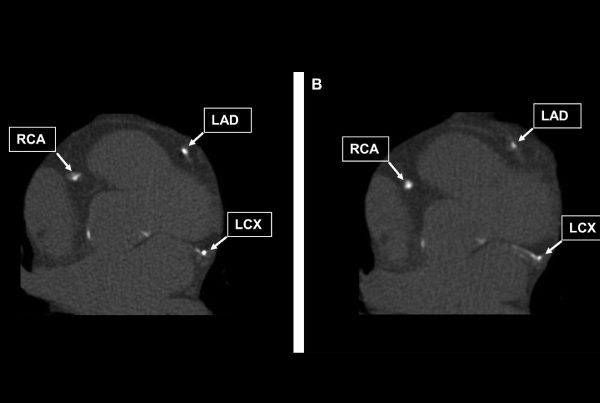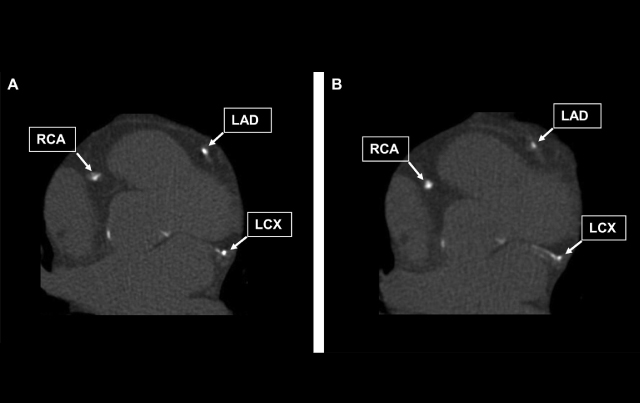Making Coronary Artery Calcification Screenings Safer

Computed tomography (CT) has been proposed as a tool for routine screening for coronary artery calcification as part of a comprehensive coronary disease risk assessment. But the risks associated with the radiation exposure of such routine screening versus the benefits in reduced risk of coronary disease have not been defined. Sunil Ram, MD, a radiologist at Scottsdale Medical Imaging Ltd. (SMIL), says strict dose reduction techniques used at SMIL substantially reduce
radiation exposure for screening calcium score CTs.

Sunil Ram, MD
The Screening for Heart Attack Prevention and Education (SHAPE) guidelines recommend screening of all asymptomatic men 45 to 75 years of age and asymptomatic women 55 to 75 years of age except those defined as very low risk. Computed tomography (CT) has been proposed as a tool for routine screening for coronary artery calcification as part of a comprehensive coronary disease risk assessment. But the risks associated with the radiation exposure of such routine screening versus the benefits in reduced risk of coronary disease have not been defined.
This is partly due to the wide range of radiation doses used for such screening. In a July 2009 Archives of Internal Medicine study of CT screening for coronary artery calcification, researchers found that radiation dose from a single coronary artery calcification CT scan varied more than 10- fold, ranging from 0.8 mSv to 10.5 mSv.
Sunil Ram, MD, a radiologist at Scottsdale Medical Imaging Ltd. (SMIL), says strict dose reduction techniques used at SMIL substantially reduce radiation exposure for screening calcium score CTs. “SMIL aggressively uses dose reduction techniques to limit patient radiation exposure,” Ram says. “Coronary calcium score CTs are an excellent screening tool to evaluate patients at risk for coronary artery disease. Using prospective triggering, we are able to image the heart only during diastole. As a result, the amount of radiation exposure to the chest and heart is markedly decreased compared to imaging throughout the cardiac cycle.”
Ram says that SMIL has been able to reduce the radiation dose for calcium score CT by 50 to 75 percent compared with imaging throughout the cardiac cycle. That experience closely matches the results of a study comparing prospective triggering with retrospective ECG-gated coronary CT angiography published earlier this year in Academic Radiology. The study of 252 adults showed no significant reduction in image quality for the prospective triggering group while achieving a 62
percent reduction in effective radiation dose.
At that level of radiation, Ram believes that risk-benefit ratio strongly favors screening. “The risk associated with the radiation exposure from CT scoring is relatively inconsequential relative to having a cardiac event,” he says.
SOURCES:
1. Naghavi M, Falk E, Hecht HS, et al. From vulnerable plaque to vulnerable patient, III: executive
summary of the screening for heart attack prevention and education (SHAPE) task force report.
American Journal of Cardiology. 2006;98(2A):2H-15H.


